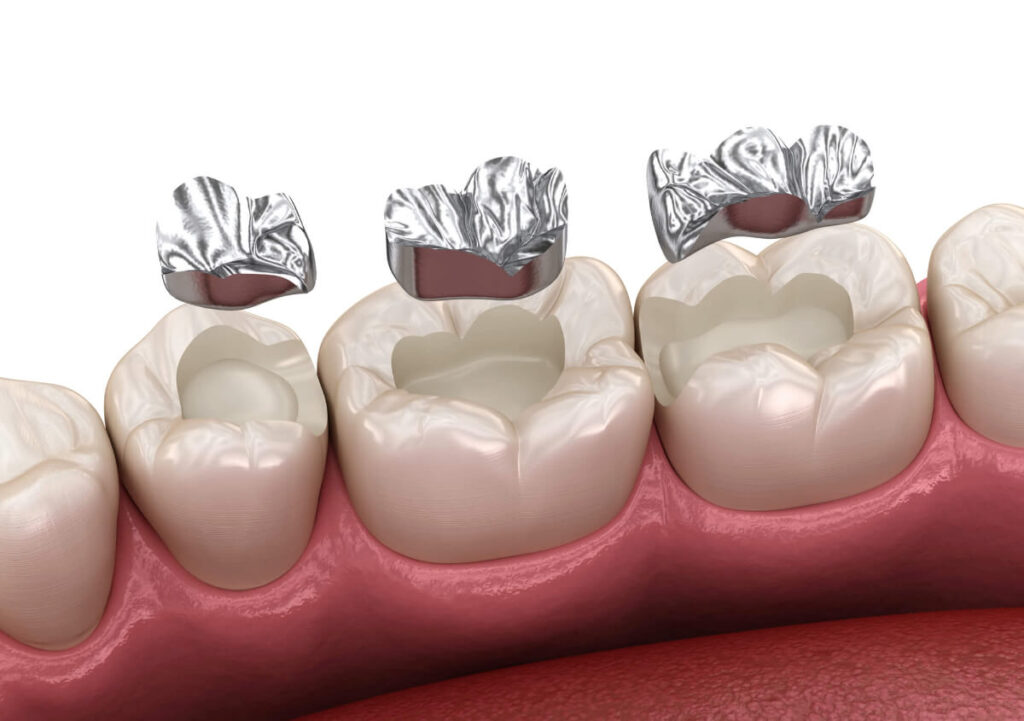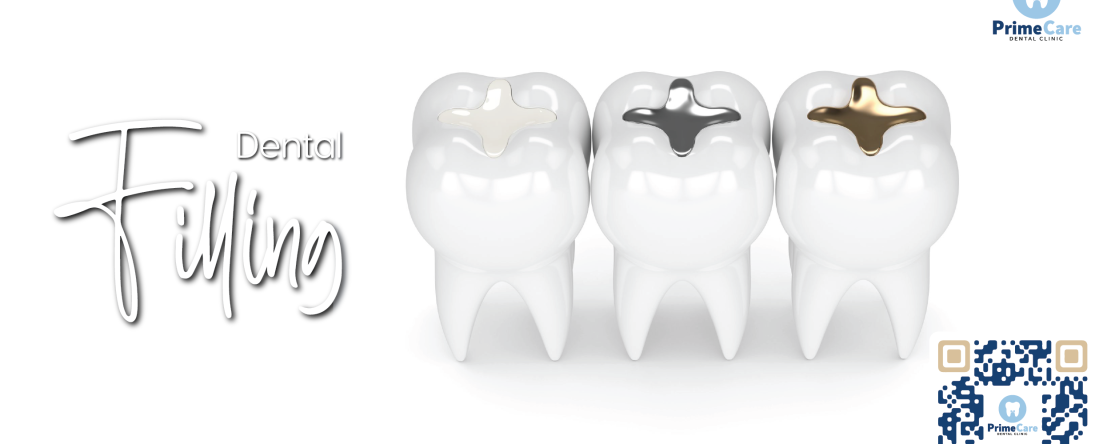Dental filling price, types, and Procedures
Explore the benefits and drawbacks of various dental filling materials, learn about indirect fillings, and understand the safety of silver amalgams. Discover whether allergies to amalgam fillings are possible and find answers to other commonly asked questions in this comprehensive guide.
What are dental fillings?
Dental fillings consist of various materials, including metals, plastics, or glass, utilized to repair decayed teeth, commonly known as “cavities.” They are also employed to mend cracked, broken, or worn-down teeth caused by factors like nail-biting or tooth-grinding.
Dental filling price Malaysia
Dental filling is a routine procedure aimed at restoring teeth damaged by decay. In Malaysia, the cost of this procedure varies based on the chosen filling material and the complexity of treatment. Generally, there are four common types of filling materials used: temporary, amalgam, composite or glass ionomer cement (GIC), and onlay or inlay.
Temporary fillings, the most economical option, typically range from RM60 to RM120. These fillings, composed of soft material, serve as short-term solutions before permanent restoration.
Amalgam fillings, comprising a blend of metals, including silver, mercury, tin, and copper, offer durability and longevity, costing between RM80 to RM150.
Composite or glass ionomer cement (GIC) fillings, made of tooth-colored resin material, blend seamlessly with natural teeth but are pricier than amalgam, ranging from RM120 to RM350.
Onlay or inlay fillings, custom-made to fit the tooth’s shape, are the most expensive option, priced between RM400 to RM800, offering superior aesthetics and durability.
It’s essential to consider that pricing may vary among dental clinics and locations, with some clinics offering promotions or discounts for certain materials. Ultimately, consulting with your dentist is crucial to determine the most suitable and budget-friendly option for your dental needs.
There are several types of dental fillings:
- Amalgam Fillings
- Composite Fillings
- Ceramic Fillings
- Glass Ionomer Fillings
- Gold Fillings
Characteristics and advantages of each types:
Amalgam Fillings:
- (Advantage) These are made from a combination of metals, including silver, mercury, tin, and copper. Amalgam fillings are known for their durability and strength, making them suitable for filling cavities in molars and areas subjected to heavy chewing pressure. However, their silver color may be noticeable, and concerns have been raised about mercury content, although they are considered safe by dental associations.
(Disadvantage) Amalgam fillings may have a visible silver color, and some individuals may have concerns regarding their appearance. Additionally, there is a potential risk of allergic reactions in certain individuals, and the placement of amalgam fillings may require the removal of more tooth structure compared to other filling materials.
Composite Fillings:
- (Advantage) Also known as tooth-colored or white fillings, composite fillings are made from a mixture of plastic and fine glass particles. They are popular for their ability to match the natural color of teeth, making them virtually invisible. Composite fillings bond directly to the tooth structure, providing good durability and resistance to fracture. They are suitable for filling cavities in visible areas of the mouth and for individuals who prefer a more aesthetic option.
- (Disadvantage) Composite fillings can be susceptible to chipping, especially in areas of the mouth subject to high stress. While they offer good aesthetic results due to their tooth-colored appearance, they may have a shorter lifespan compared to other filling materials. Additionally, composite fillings tend to be more expensive than traditional amalgam fillings.
Ceramic Fillings:
- (Advantage) These fillings, also known as porcelain fillings, are made from porcelain or ceramic materials. They are highly durable, stain-resistant, and can be color-matched to blend seamlessly with natural teeth. Ceramic fillings are ideal for restoring teeth in highly visible areas of the mouth due to their natural appearance. They are also biocompatible and less likely to cause allergic reactions.
- (Disadvantage) Composite fillings can be susceptible to chipping, especially in areas of the mouth subject to high stress. While they offer good aesthetic results due to their tooth-colored appearance, they may have a shorter lifespan compared to other filling materials. Additionally, composite fillings tend to be more expensive than traditional amalgam fillings.
Glass Ionomer Fillings:
- (Advantage) These fillings are made from a combination of acrylic and glass powders. They release fluoride, which helps protect against further decay, making them suitable for filling cavities in children’s teeth or areas with a high risk of recurrent decay. However, glass ionomer fillings are not as durable as other types and may wear down more quickly, requiring replacement over time.
- (Disadvantage) Glass ionomer fillings are generally weaker and less durable compared to composite resin fillings. They may be more prone to wear and fracture, and their lifespan is typically shorter, lasting five years or less. While glass ionomer fillings release fluoride, which can help protect against further decay, they may not be suitable for areas of the mouth subject to heavy chewing forces.
Gold Fillings:
- (Advantage) Gold fillings, also known as gold inlays or onlays, are made from gold alloy. They are highly durable and long-lasting, with excellent resistance to wear and fracture. Gold fillings are custom-made in a dental laboratory and cemented into place by the dentist. While they offer superior longevity, their high cost and conspicuous appearance make them less commonly used than other filling materials.
- (Disadvantage) Gold fillings are considerably more expensive than other filling options, primarily due to the cost of the material and the labor-intensive fabrication process. Additionally, their visible appearance may not be aesthetically pleasing to some individuals, and their placement may require multiple office visits. While gold fillings offer excellent longevity and durability, their high cost and conspicuous appearance make them less popular than other filling materials.
“A smile is the prettiest thing you can wear, and good dental care ensures it stays that way.” – Dr. Wong

Dental filling procedure
The dental filling procedure serves as a restorative treatment for minor tooth fractures or decay, aimed at repairing and improving dental function. By filling in damaged areas, dental fillings can enhance the tooth’s surface and aid in biting and chewing. Moreover, individuals experiencing tooth decay often endure tooth sensitivity caused by enamel loss, which can be substantially alleviated through the application of a dental filling.
Initial Assessment and Treatment Planning
The first phase of the dental filling procedure involves examining the teeth to determine the most appropriate course of action for the patient. While dental fillings are effective for minor fractures and decay, more severe cases may necessitate alternative restorative treatments like dental crowns or implants.
Dentists employ tools such as dental probes and caries-detecting solutions to assess problematic areas in the teeth. Additionally, X-rays may be utilized to obtain detailed information about the extent and location of decay.
Various filling materials, such as direct composite bonding, porcelain, glass ionomer, silver amalgam, or gold inlays, offer options for sealing and filling cavities to prevent further tooth damage from decay. The selection of the most suitable material depends on factors such as the cavity’s location, the patient’s medical history, aesthetic preferences, financial considerations, and personal preference.
The Treatment Process
To commence the dental filling procedure, a local anesthetic is administered to numb the area around the affected tooth, ensuring the patient’s comfort throughout the treatment.
Subsequently, the decayed or damaged tooth and its surrounding areas are prepared for restoration. Using a dental handpiece or laser, the damaged portions of the tooth are removed, followed by cleansing the area with an acid gel to eliminate any remaining bacteria or debris. The filling material is then applied to fill the cavity.
For composite fillings, isolation of the affected tooth is essential to prevent interference and ensure proper bonding of the composite restoration. Various adhesives are applied before the composite material, which is then hardened using a special bonding light.
Ultimately, the dental filling procedure concludes with the polishing of the finished tooth, ensuring a smooth and aesthetically pleasing result.
Aftercare Guidelines
Following the completion of the dental filling procedure, it is essential for the dentist to allocate time to discuss preventive measures with the patient to deter decay from developing beneath or near the filling, which can also aid in preventing decay in adjacent teeth.
Patients should be encouraged to adhere to proper oral hygiene practices, including brushing their teeth with fluoride toothpaste twice daily, daily flossing, and using interdental cleaners regularly. For individuals at a high risk of further decay, fluoride mouth rinses can offer additional benefits.
In some cases, patients with elevated caries risk may benefit from the application of sealants on the molars at the back of the mouth to mitigate plaque accumulation and decay in the area.
Additionally, follow-up appointments may be necessary to monitor the progress of the tooth with the filling and for routine professional cleanings.
See More On: Teeth Scaling Price in Kuala Lumpur & Selangor
About Us
Let our dedicated dentist at PrimeCare Dental Clinic inspire you with personalized care and a genuine commitment to putting a bright smile on your face. Experience the warmth and expertise that make our dental practice truly special.
Recent Post
Newsletter
Other Categories:
Post Tags:
